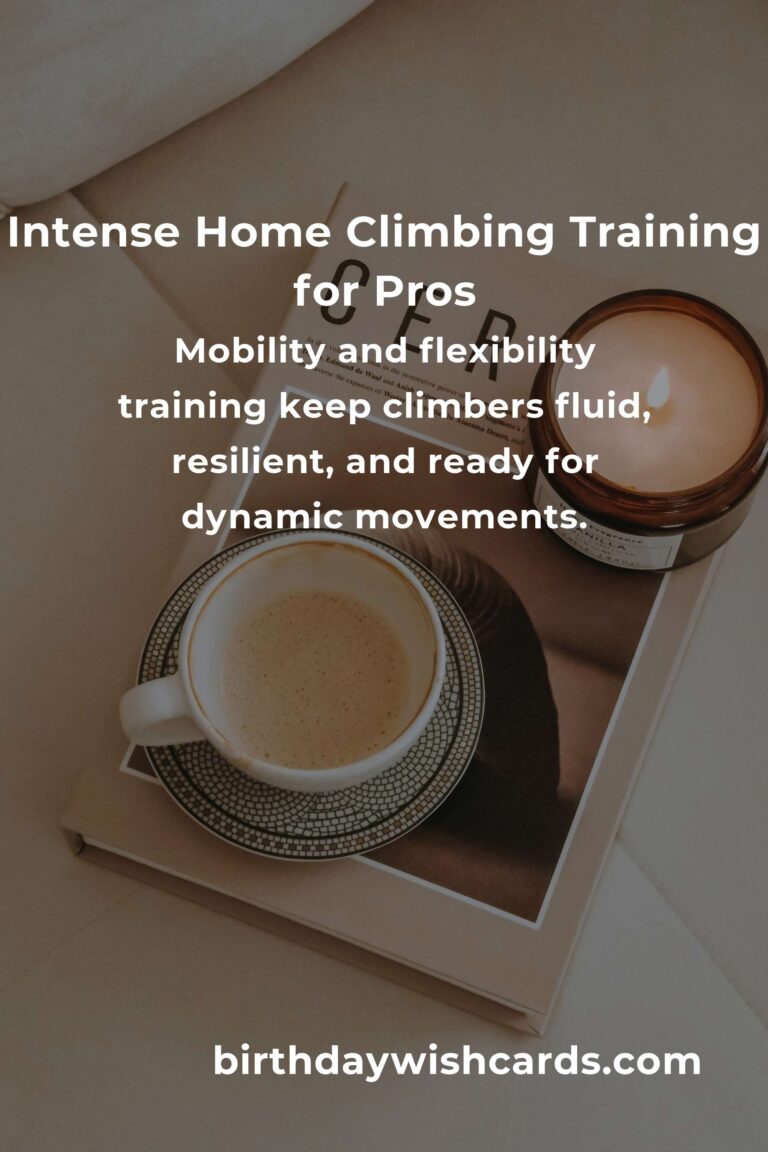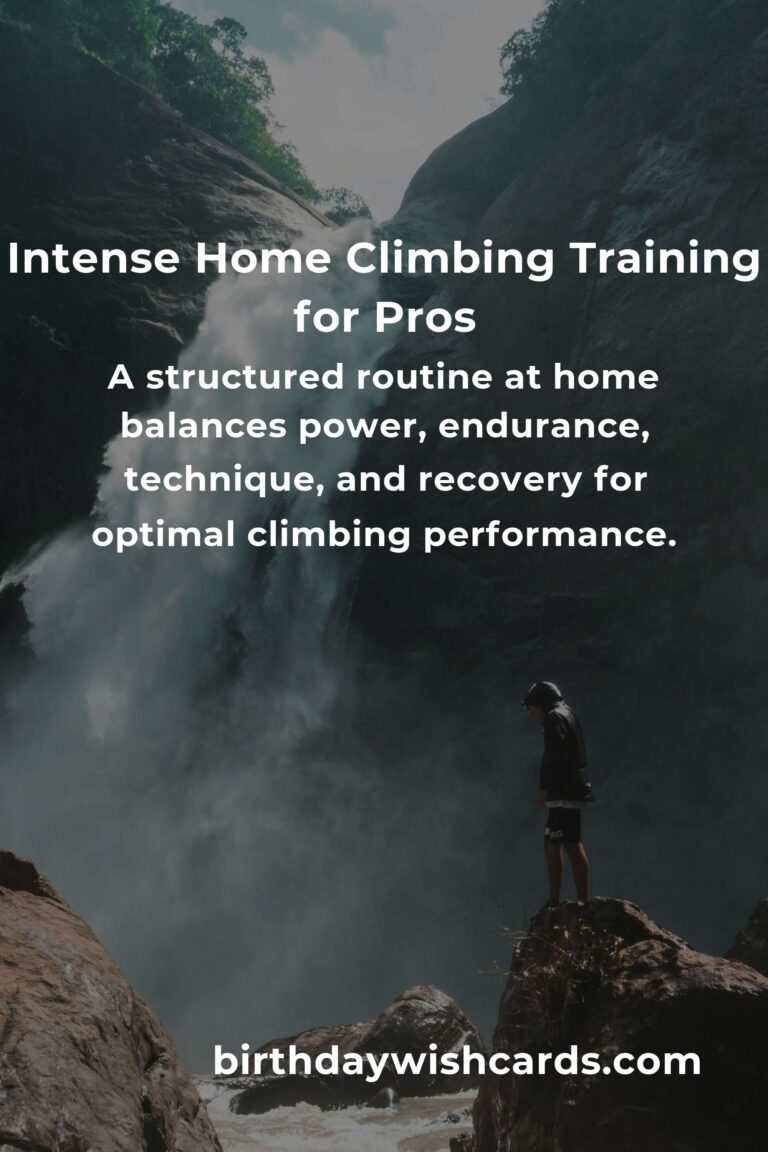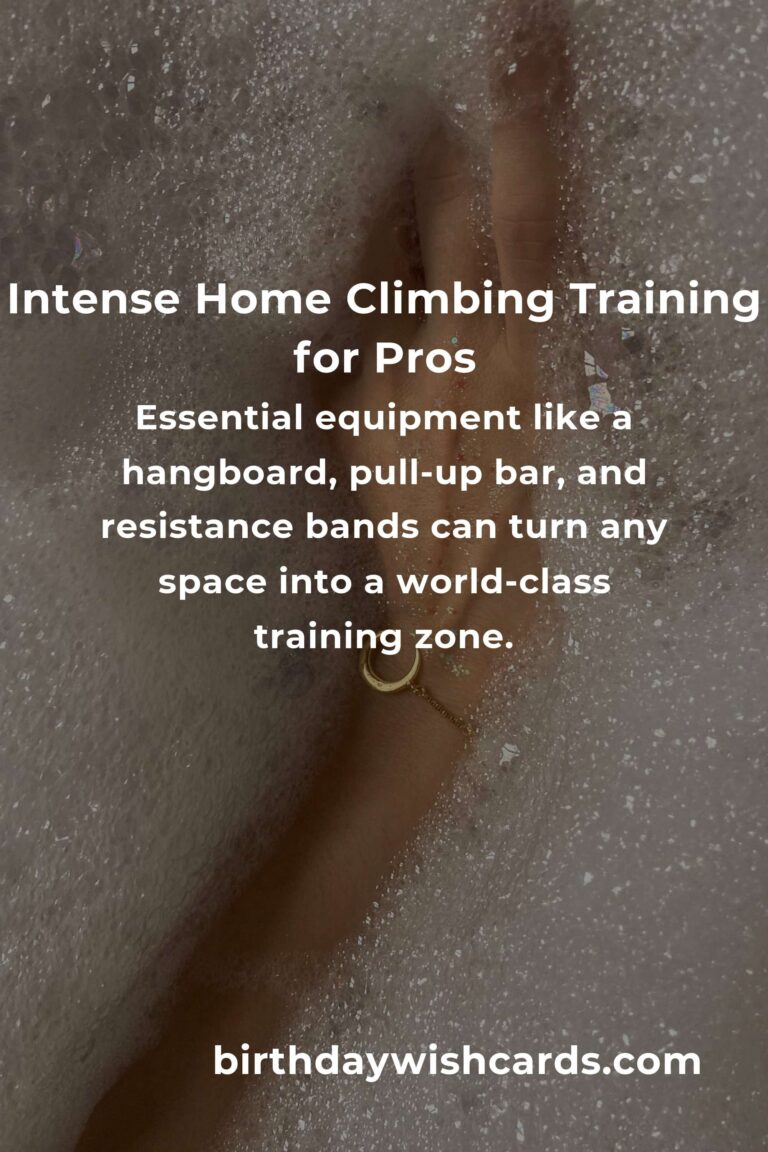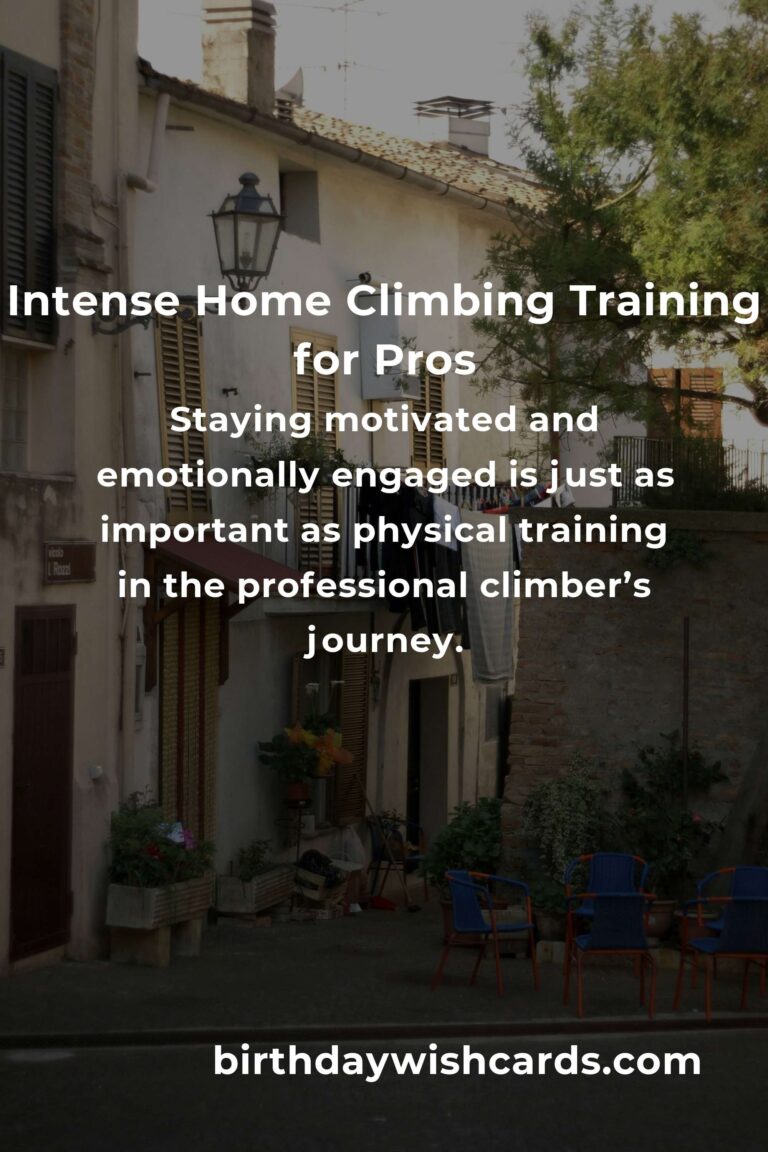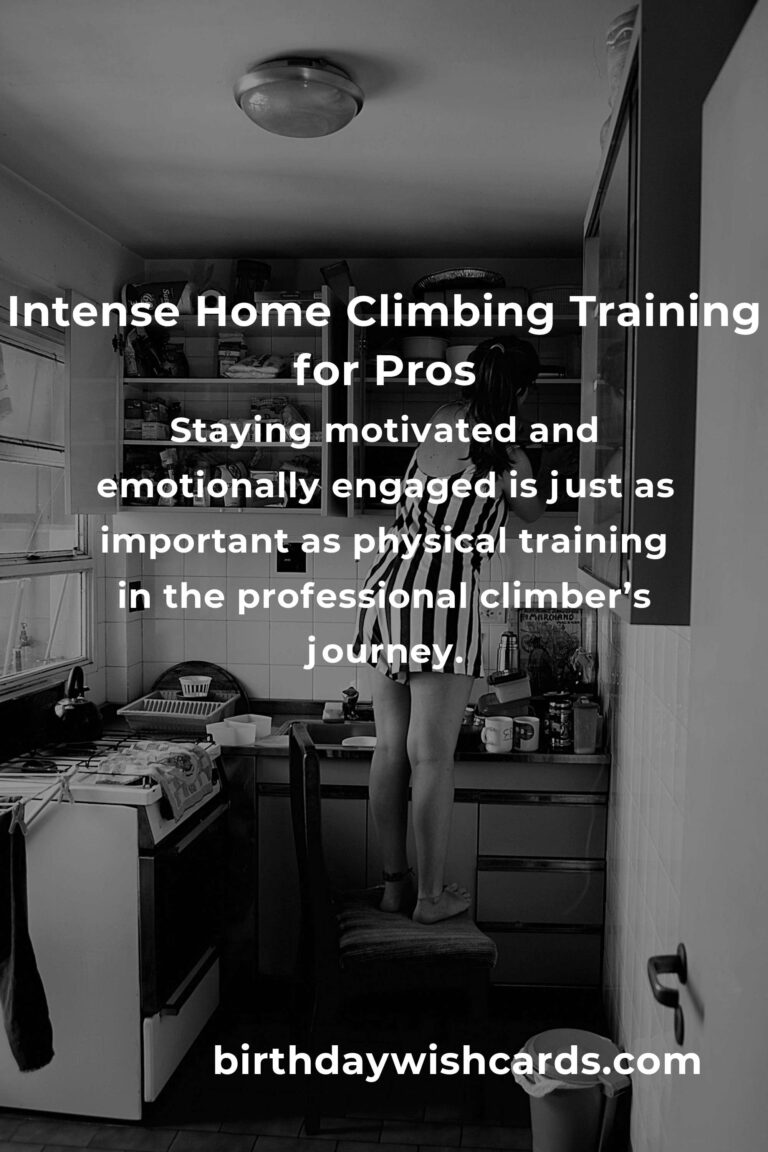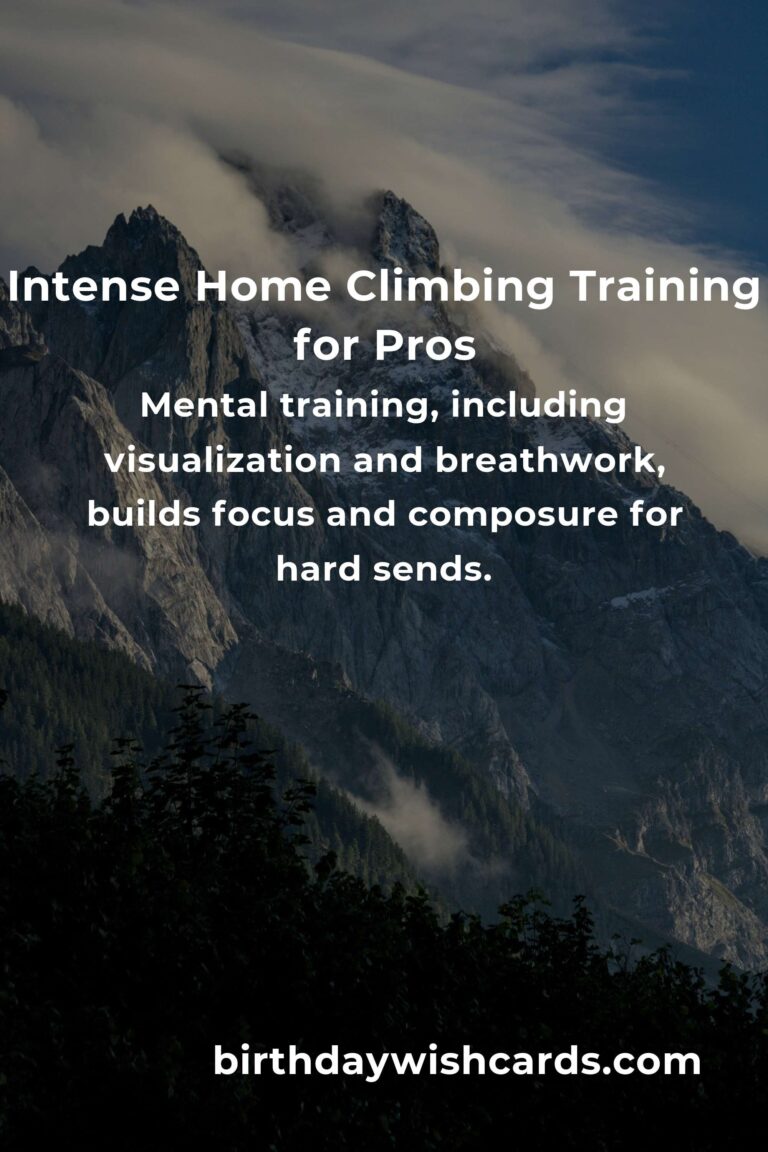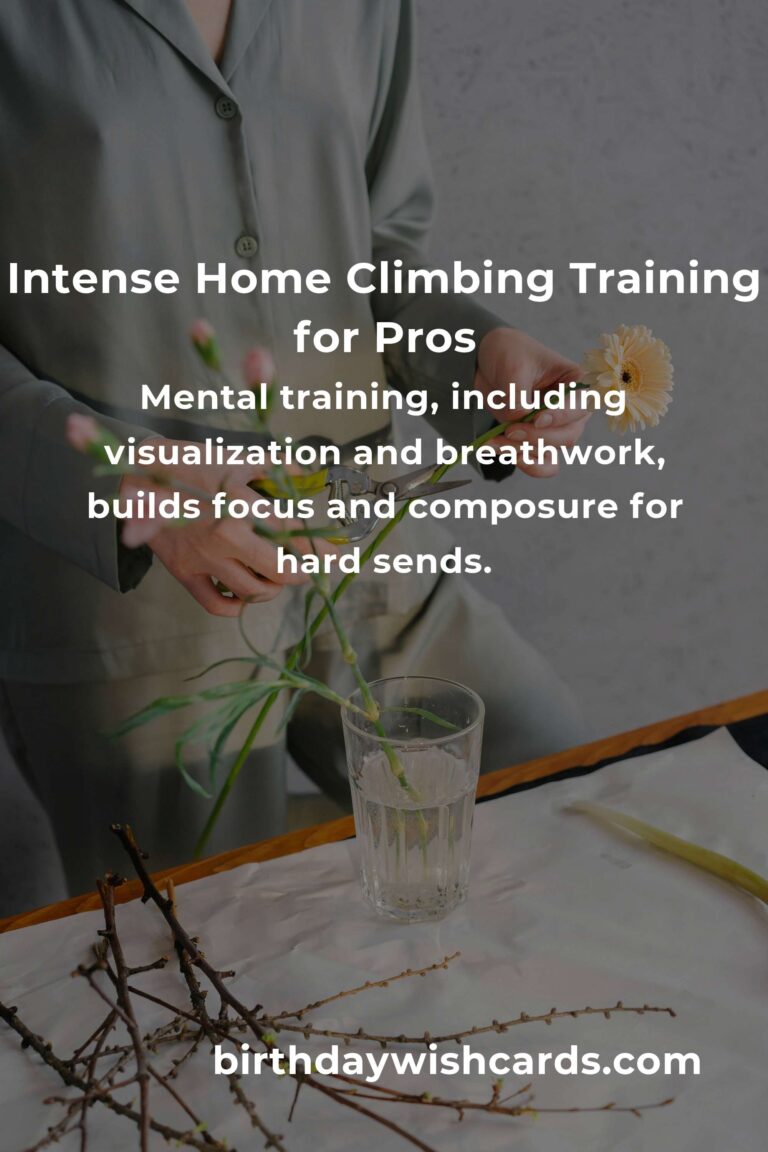
Rock climbing is more than just a sport—it’s a lifestyle, a test of willpower, and a dance between strength and finesse. For professional climbers, the drive to improve never stops, even when you’re at home. Whether you’re training for your next big project, rehabbing an injury, or simply maintaining peak condition, a disciplined, well-structured home rock climbing routine is crucial. This guide will equip you with everything you need to keep pushing limits, right from your living room, garage, or home wall.
The Professional’s Approach: Why Home Training Matters
For professionals, climbing is a career and a calling. The difference between topping out a world-class route and falling short often comes down to the details. Home training isn’t just a substitute for outdoor or gym climbing—it’s an opportunity. It’s a chance to fine-tune specific weaknesses, build strength, and foster mental resilience in ways that are sometimes neglected during outdoor sessions. In a world where adaptability is key, the best climbers know: your home is your secret weapon.
Essential Equipment for the Home Climbing Athlete
Before diving into routines, let’s talk gear. You don’t need a massive home wall to train like a pro, but a few essentials can make all the difference:
- Hangboard: The foundation of finger strength training.
- Pull-up bar: For general upper body power.
- Portable campus board or rungs: For explosive power and contact strength.
- Resistance bands: Useful for antagonistic training and injury prevention.
- Grip trainers: For pinch and open-hand strength.
- Medicine ball or kettlebells: To build core and total-body power.
- Crash pads: If you have a small bouldering wall at home.
- Yoga mat: For stretching, mobility, and warm-ups.
Structuring Your Home Climbing Routine
A pro-level routine balances strength, power, endurance, mobility, and mental training. Here’s an ideal weekly structure:
- 2x Strength & Power Sessions: Hangboarding, campus board, weighted pull-ups.
- 2x Movement & Technique Sessions: Home wall bouldering drills, footwork exercises.
- 1x Endurance Session: ARC (Aerobic Restoration & Capillarity) training or circuit-style workouts.
- 2x Mobility & Recovery Sessions: Yoga, stretching, and self-massage.
- Daily: Core work, antagonist muscle training, and mental exercises.
Warm-Up: Priming Your Body and Mind
Never skip your warm-up. Proper preparation reduces injury risk and enhances performance. Here’s a quick yet comprehensive routine:
- 5–10 minutes of light cardio (jump rope, shadowboxing, brisk walking)
- Dynamic stretches (arm circles, leg swings, trunk twists)
- Wrist, finger, and shoulder mobility drills
- Easy traversing on your wall or easy hangs on the hangboard
Finger Strength: Hangboarding for Pros
The hangboard is your best friend for finger strength. But be warned: with great power comes great responsibility. Injuries from over-ambitious hangboarding are common, even among pros. Follow these guidelines:
- Repeaters: Hang for 7 seconds, rest for 3, repeat 6–7 times. Rest 2–3 minutes, then repeat for 4–5 sets.
- Max Hangs: Add weight and hang for 10 seconds, rest for 2–3 minutes. Do 5 sets.
- Varied Grips: Train open hand, half-crimp, and pinch positions.
- Rest & Recovery: Don’t hangboard hard more than 2–3 times per week.
Pull Power: Explosive and Controlled Strength
Climbing isn’t just about pulling—it’s about pulling powerfully and with control. Training should include:
- Weighted Pull-Ups: 4–6 sets of 3–5 reps at high intensity.
- One-Arm Pull-Up Progressions: Assisted or negatives, 3–4 sets.
- Lock-Off Holds: Hold at 90° and 120° for 5–10 seconds, 3–4 sets.
- Explosive Pull-Ups: Pull as high as possible; try to touch your chest to the bar. 3 sets of 5–8 reps.
Power Endurance: Circuit and Interval Training
Power endurance is the ability to execute hard moves back-to-back. At home, this means creative circuits:
- 4x4s: Do four problems on your home wall, four times, with 1–2 minutes rest between laps.
- Interval Hangs: Hang on moderate edges for 30 seconds, rest for 30 seconds, repeat 5–10 times.
- Strength Circuits: Combine pull-ups, push-ups, core, and hangs in a circuit. Aim for 3–5 rounds.
Technique and Movement Drills
Even without a world-class wall, you can sharpen your skills:
- Silent Feet: Climb slowly and place feet quietly.
- One-Limb Drills: Climb using only one hand or one foot to force better body positioning.
- Route Reading: Set imaginary routes and visualize every move.
- Footwork Ladders: Use only feet to move up and down the wall, hands for balance.
Core and Antagonist Training
World-class climbers have world-class cores. And strong antagonists (pushing muscles) prevent injury and round out your power:
- Planks and Side Planks: Hold for 1–2 minutes each.
- Hanging Leg Raises: 3–4 sets of 10–15 reps.
- Supermans and Arch Holds: Balance out all that forward pulling.
- Push-Ups and Dips: 3–5 sets of 10–20 reps.
- Theraband Rows and External Rotations: Maintain healthy shoulders.
Mobility, Flexibility, and Injury Prevention
Mobility is the silent hero of elite climbing. Proactive flexibility work keeps you fluid and less prone to injury:
- Yoga: Focus on hips, hamstrings, shoulders, and spine.
- Foam Rolling: Release tight fascia and speed recovery.
- Active Stretching: Dynamic movements post-session.
- Massage Ball Work: Target finger, forearm, and upper back knots.
Mind Games: Mental Training at Home
Climbing is as much mental as physical. At home, professionals can:
- Visualization: Mentally rehearse climbing hard routes.
- Breathwork: Practice controlled breathing for focus.
- Meditation: Build resilience and stay composed under pressure.
- Journaling: Track sessions, goals, and emotional state.
Sample Week: Pro Home Climbing Program
Here’s a sample structure for a professional:
- Monday: Hangboard + Pull Power + Core
- Tuesday: Movement & Technique + Mobility
- Wednesday: Power Endurance Circuit + Antagonist work
- Thursday: Rest or Active Recovery (Yoga, Stretching)
- Friday: Hangboard + Weighted Pull-Ups + Core
- Saturday: Home Wall Bouldering Drills + Mobility
- Sunday: Endurance Circuit + Mental Training
Nutrition and Recovery: Fueling Performance
Home training is intense—and your body needs fuel. Focus on:
- Balanced Meals: Lean proteins, complex carbs, healthy fats.
- Hydration: Drink water throughout the day.
- Supplements: Consider vitamin D, magnesium, and collagen for joint and tendon health.
- Sleep: Aim for 7–9 hours per night.
- Active Recovery: Walks, stretching, and foam rolling on rest days.
Adapting for Injury and Longevity
Professional climbers know injuries can derail progress. At home, prioritize prehab and listen to your body:
- Finger Care: Warm up fingers, avoid overtraining.
- Shoulder Health: Regular rotator cuff and scapular exercises.
- Rest Days: Don’t skip them—adapt intensity as needed.
Staying Motivated: The Emotional Side of Home Training
Isolation, monotony, and lack of social energy can make home training a mental battle. Find meaning in the grind:
- Set Micro-Goals: Small wins build momentum.
- Connect with Community: Share progress online, join virtual challenges, and stay inspired by others.
- Remember Your Why: Revisit your love for the sport and your personal journey.
The journey of a professional climber is one of constant adaptation, grit, and passion. Your home can become a crucible for growth—a place where you push beyond your perceived limits, undistracted and fully focused. By mastering your home rock climbing routine, you’re not just staying fit; you’re laying the groundwork for future victories on the wall and in life.
Conclusion
A professional’s home climbing routine is as much about heart as it is about muscle. It’s about facing yourself, alone, and coming out stronger. So set up your gear, carve out your space, and climb every day—not just for the next send, but for the climber you’re becoming. Remember: the summit is just a milestone; mastery is a lifelong ascent.
Home training is an opportunity for professionals to fine-tune weaknesses and sharpen strengths.
A structured routine at home balances power, endurance, technique, and recovery for optimal climbing performance.
Essential equipment like a hangboard, pull-up bar, and resistance bands can turn any space into a world-class training zone.
A comprehensive warm-up reduces injury risk and primes both body and mind for hard sessions.
Hangboarding, when done responsibly, is crucial for developing elite-level finger strength.
Core and antagonist muscle work are key for injury prevention and overall climbing power.
Mobility and flexibility training keep climbers fluid, resilient, and ready for dynamic movements.
Mental training, including visualization and breathwork, builds focus and composure for hard sends.
Nutrition, hydration, and quality sleep are the foundation of high-level performance and recovery.
Staying motivated and emotionally engaged is just as important as physical training in the professional climber’s journey.
#HomeClimbingPro #ClimbingRoutine #ClimberLife #StrengthAndTechnique #TrainAtHome #ClimbingMotivation #FingerStrength #RockClimbingTraining


